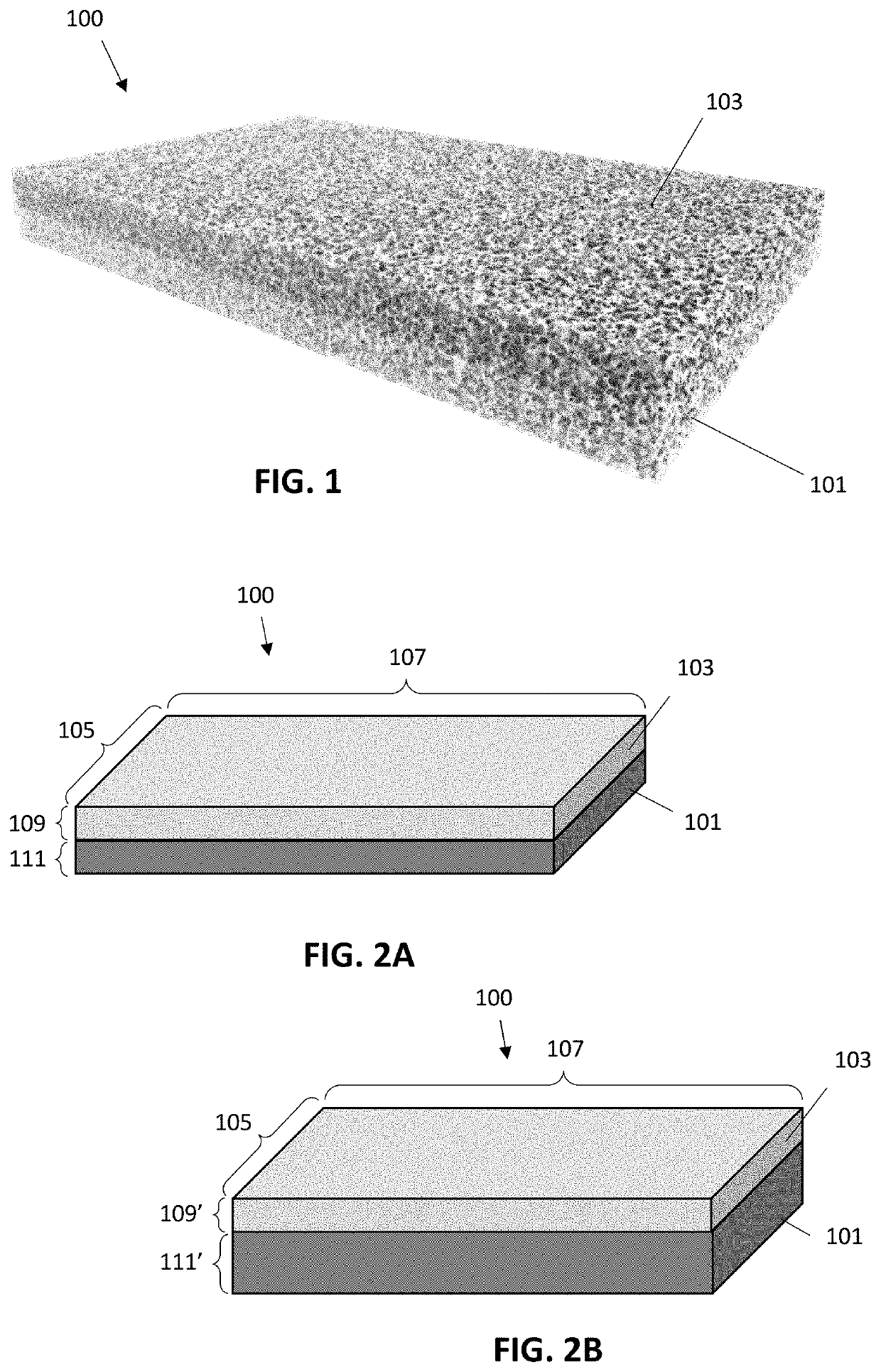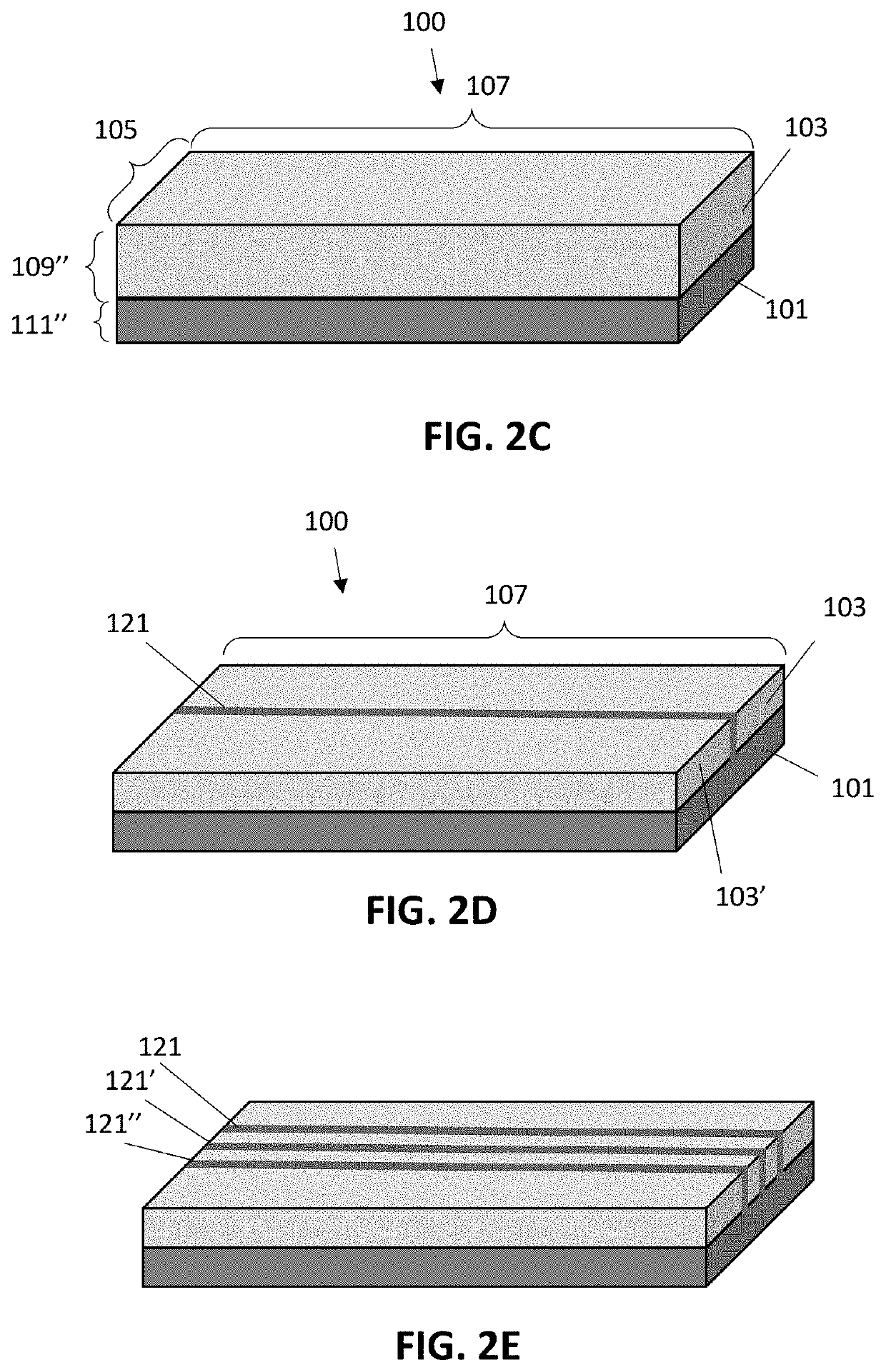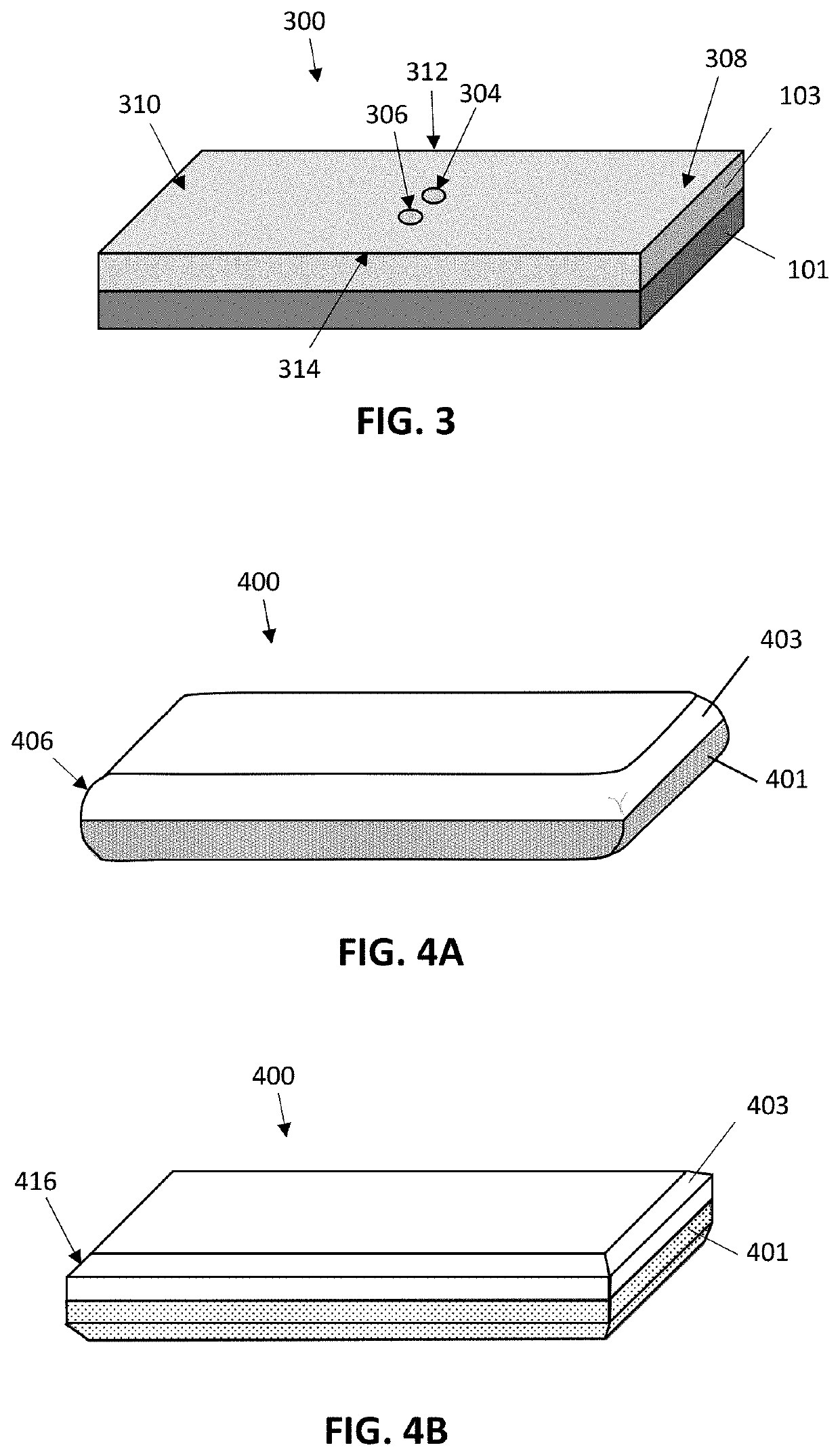Connective tissue to bone interface scaffolds
a technology of connective tissue and bone interface, applied in the field of connective tissue to bone interface scaffolds, can solve the problems of rotator cuff injuries that are particularly prevalent and difficult to repair, dull ache in the shoulder, and the risk of rotator cuff injuries increases with ag
- Summary
- Abstract
- Description
- Claims
- Application Information
AI Technical Summary
Benefits of technology
Problems solved by technology
Method used
Image
Examples
Embodiment Construction
[0045]Described herein are connective tissue-to-bone interface scaffolds (e.g., grafts) that are adapted and configured for surgical implantation onto bone to allow ingrowth of both bone as well as connective tissue. These grafts may be particularly well adapted for implantation and attachment as part of a minimally-invasive, e.g., arthroscopic, laparoscopic, surgery.
[0046]For example, FIG. 1 shows one example of a tissue-to-bone interface scaffold as described herein 100. In FIG. 1, the scaffold includes a first, demineralized layer 101 and a second mineralized layer 103. As will be described in detail below, the dimensions of the mineralized and demineralized layers, and in particular, their ratios, may be selected within a desired range to optimize both the ease of using them in the particular surgical procedures described herein, as well as for stability and in-growth of connective tissue and / or bone. In FIG. 1 the mineralized and demineralized portions are both porous, although...
PUM
| Property | Measurement | Unit |
|---|---|---|
| Length | aaaaa | aaaaa |
| Length | aaaaa | aaaaa |
| Length | aaaaa | aaaaa |
Abstract
Description
Claims
Application Information
 Login to View More
Login to View More - R&D
- Intellectual Property
- Life Sciences
- Materials
- Tech Scout
- Unparalleled Data Quality
- Higher Quality Content
- 60% Fewer Hallucinations
Browse by: Latest US Patents, China's latest patents, Technical Efficacy Thesaurus, Application Domain, Technology Topic, Popular Technical Reports.
© 2025 PatSnap. All rights reserved.Legal|Privacy policy|Modern Slavery Act Transparency Statement|Sitemap|About US| Contact US: help@patsnap.com



